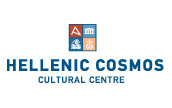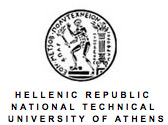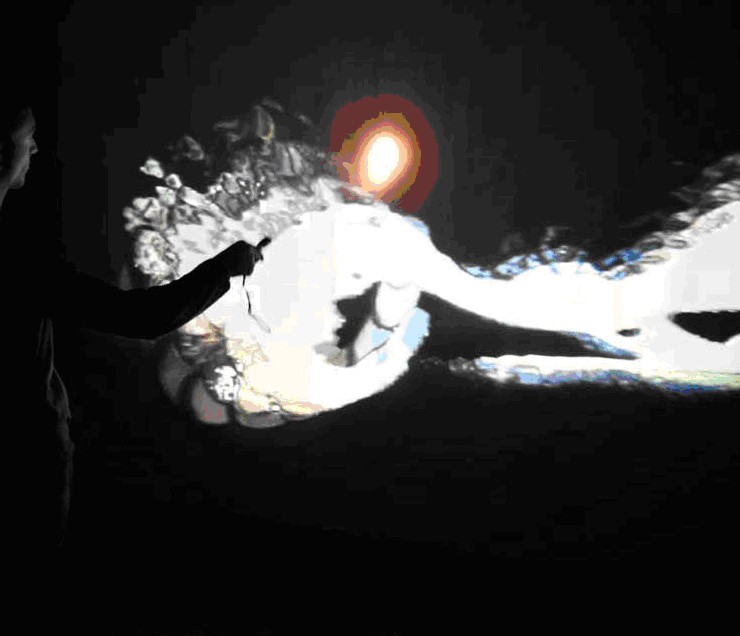Maurice Benayoun is a pioneer new media artist and theorist. His work and research explore the potentiality of various media from video to virtual reality, Web to wireless art, public space large-scale art installations to interactive exhibitions. His work has been awarded and exhibited all over the world in international museums.
 From the Quarxs, one of the very first computer animation series in the early ’90s to NeORIZON giant street installation in Shanghai (2008), not to forget the Tunnel under the Atlantic, World Skin, a Photo Safari in the Land of War (Golden Nica, Ars Electronica 1998), or the Mechanics of emotions, Benayoun’s work tries to exceed technologies by exploring new ways of creating meaning through experiencing metaphoric situations. He coined ‘Critical Fusion’ as an art practice based on altering both physical and social space by introducing keys to help deciphering them.
From the Quarxs, one of the very first computer animation series in the early ’90s to NeORIZON giant street installation in Shanghai (2008), not to forget the Tunnel under the Atlantic, World Skin, a Photo Safari in the Land of War (Golden Nica, Ars Electronica 1998), or the Mechanics of emotions, Benayoun’s work tries to exceed technologies by exploring new ways of creating meaning through experiencing metaphoric situations. He coined ‘Critical Fusion’ as an art practice based on altering both physical and social space by introducing keys to help deciphering them.
Besides his artworks, Maurice Benayoun has been conceiving large-scale exhibitions and architecture projects including the permanent installation inside the Arc de Triomphe in Paris.
Maurice Benayoun has been teaching new media art at the Université Paris 1 Panthéon-Sorbonne. He is co-founder and art director of the CITU research center and assistant professor at the Université Paris 8.
The Art Collider is an experimental project, an ecosystem that allows artists, writers, filmakers, composers and researcher to explore from inside the process of sharing and to encourage new forms of creation that would deliberately assume the very nature of transactional art practices. The Art Collider is an international platform for connected creation of time based art aiming at creating a collaborative approach of media art through an experimental system of Peer-to-Peer or Artist-to-Artist production.
 In the Collider the art space can be Internet or any traditional place dedicated or not to art. The people can be anybody willing to produce something with any kind of artistic intention. The work is not necessary made of things, it can be a process, an action, a filter… If the resulting work is still made under the responsibility of authors, it can openly use material coming from other works produced by other artists. Other artworks can officially be used as material to be altered, combined or absorbed by any participant’s work. Any component of the art ecosystem can become material to work with in the hands of the participating artists. Critics are admitted and their production, made of words, can also become a fruitful material for art. Curators are not excluded. To express a judgement doesn’t mean to exclude anybody. A work not considered by most of the people as good for art can become an excellent material for others. Institutional places participating to the network like museums or galleries can of course curate the works they want to show, but they cannot decide what the work will become when connected to the collider.
In the Collider the art space can be Internet or any traditional place dedicated or not to art. The people can be anybody willing to produce something with any kind of artistic intention. The work is not necessary made of things, it can be a process, an action, a filter… If the resulting work is still made under the responsibility of authors, it can openly use material coming from other works produced by other artists. Other artworks can officially be used as material to be altered, combined or absorbed by any participant’s work. Any component of the art ecosystem can become material to work with in the hands of the participating artists. Critics are admitted and their production, made of words, can also become a fruitful material for art. Curators are not excluded. To express a judgement doesn’t mean to exclude anybody. A work not considered by most of the people as good for art can become an excellent material for others. Institutional places participating to the network like museums or galleries can of course curate the works they want to show, but they cannot decide what the work will become when connected to the collider.
Different events linked the Collider partners during the last years. Initially called IN OUT, it became the Art Collider when started the cooperation with SFAI (San Francisco Art Institute). The last event, in April 2010, gathered artist in Paris, San Francisco, Ithaca (Cornell U.) and Linz (Austria), not to mention those working from their place. In Paris, la Bellevilloise, the event was called (UNCURATABLE [ART) INCURABLE] playing with words that means that cannot be “curated” nor “cured”. To figure out what kind of artworks emerge in such an environment, we should describe some of the works taking advantage of the Collider ecosystem.
AAO project and TheArtCollider Collaboration
A workshop on TheArtCollider, in partnership with the AAO project at the Athens School of Fine Arts and Benaki Museum Athens, will commence at the end of March. Participants will be able follow the workshop via Skype. More information will be made available soon through the TheArtCollider and AAO project websites. The partnership between CiTu and the AAO project will be continuous, until the event in June at the Benaki museum and during Future en Seine.



















